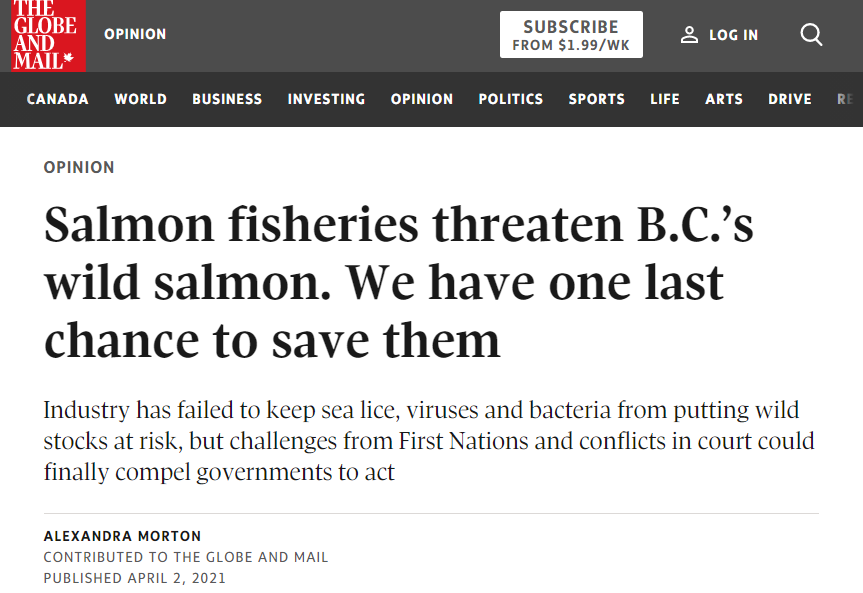 Kanadísk stjórnvöld hafa bannað sjókvíaeldi við vesturströnd landsins vegna ömurlegra áhrifa á villta laxastofna. Erfðablöndun er þó ekki hluti skaðans því í sjókvíunum hefur verið eldislax af Norður-Atlantshafskyni sem getur ekki blandast Kyrrahafslaxinum. Sjúkdómar og sníkjudýr, þar á meðal laxalús, úr sjókvíunum hefur hins vegar stórskaðað villta laxinn.
Kanadísk stjórnvöld hafa bannað sjókvíaeldi við vesturströnd landsins vegna ömurlegra áhrifa á villta laxastofna. Erfðablöndun er þó ekki hluti skaðans því í sjókvíunum hefur verið eldislax af Norður-Atlantshafskyni sem getur ekki blandast Kyrrahafslaxinum. Sjúkdómar og sníkjudýr, þar á meðal laxalús, úr sjókvíunum hefur hins vegar stórskaðað villta laxinn.
Hér við land bætist erfðablöndunin við það skelfilega tjón sem þessi iðnaður veldur á umhverfinu og lífríkinu.
Í grein sem birtist í Globe and Mail fer Alexandra Morton, stofnandi náttúruverndarsamtakanna the Salmon Coast Field Station yfir sögu baráttu frumbyggja Kanada fyrir vernd villtra laxastofna og hörmungarástandið sem sjókvíaeldið hefur skapað á Kyrrahafsströnd Kanada. Hún segir m.a.:
„For decades, federal and provincial bureaucrats have turned a blind eye to the damage wrought by this enterprise and softened the regulations intended to keep it in check. They created an industry that saw no reason to accommodate the people who depend on wild stocks. Salmon farming companies may adorn their vessels and websites with Indigenous imagery, but woe to the First Nation that has tried to defend its vanishing salmon runs from the viruses, bacteria and parasites unleashed from these floating feedlots.
But now, in a remarkable turn of events, the three foreign-owned companies that dominate salmon farming in British Columbia face a hard reckoning. It comes from the hands of Indigenous governments that place a high priority on the benefits provided by wild salmon. On Dec. 17, 2020, in a stark reversal of the status quo, the federal Minister of Fisheries, Bernadette Jordan, emerged from consultations with seven First Nations and told the industry that it was not allowed to restock its 19 salmon farms in B.C.’s Discovery Islands, and that their licences would expire in 2022. …
To be clear, the issue here isn’t whether we should farm fish, but how. If these companies erected solid barriers between their feedlots and the ocean, they would solve a long list of problems. But the only solid wall is the one the bureaucracies of the provincial Ministry of Agriculture, the Canadian Food Inspection Agency and the DFO’s Aquaculture Management Division built to protect the industry from anything that might reduce profits. Salmon farming revenues hinge on externalizing the cost of dealing with waste. Moving into tanks means companies would have to pay more for its removal, so they are not keen to do so.“
